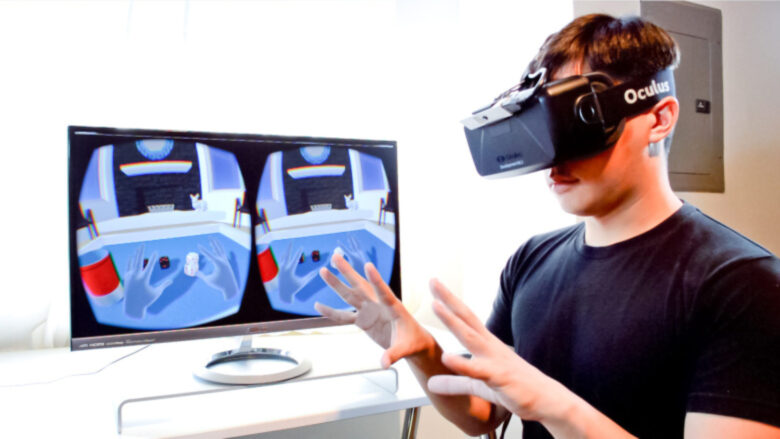Are you a gaming enthusiast looking for a glimpse into the future of gaming? Look no further!
In this blog, we will explore the potential of gaming in the upcoming decade and discuss what it holds for everyone. From virtual reality to artificial intelligence, this blog will help you understand how gaming is set to revolutionize the world. So get ready for an exciting journey into the future!

Source: medium.com
Contents
The Increasing Popularity of Gaming
The rise of mobile gaming has increased accessibility to an even wider audience, with people no longer just playing on PCs or consoles; smartphones and tablets are now being used as systems of play. This portability has seen many casual gamers turn into power users as they engage with sophisticated multiplayer games on a daily basis, becoming familiar with complex controls even if they don’t own a console or PC.
The increasing popularity of gaming is sure to continue in the next decade. Technology will continue to make multiplayer games more engaging while simultaneous advancements in hardware will allow developers more room for creativity when creating immersive virtual worlds filled with mind-blowing graphics and beautifully rendered characters. New titles from well-known franchises will also bring thousands of players back for another round, cementing their loyalty for years to come. You can get more info on https://www.thelostgamer.com/

Source: analyticsinsight.net
The Impact of AI
The impact of artificial intelligence (AI) on gaming already has been profound and may become even more significant as computers and game consoles get smarter. AI is increasingly being used to create virtual opponents for players to challenge, as well as to provide game designers with more flexibility and customization options in levels, design, and character abilities.
As AI technology improves, gamers may see computer-generated opponents that react to behavior-changing decisions made by the user. Games that feature these highly interactive capabilities have the highest potential for success in the future.
Additionally, AI will enable games to better simulate real-world situations and scenarios. For example, some racing games have highly detailed models that mimic actual physical car movements while considering other factors such as wind resistance and surface conditions, while sports simulation games use physics-based simulations of athletic abilities, creating realistic outcomes in every match or race.
In addition to providing a more engaging gaming experience, AI will create advantages for gamers such as enhanced device control with natural language processing algorithms which will allow users to issue commands via voice or text input. Voice-recognition systems also may soon be incorporated into eSports tournaments so spectators can follow their favorite players’ moves more easily.
AI also has tremendous potential for virtual reality (VR) technology in gaming where game developers could create environments enabling interactive interactions between users in an immersive setting that integrates audio, visuals, objects, and characters controlled by AI algorithms rather than human operators.

Source: blippar.com
Augmented Reality and Virtual Reality
Augmented Reality (AR) and Virtual Reality (VR) have become increasingly popular in video gaming over the last few years, and this trend is set to continue into the next decade. The gaming industry has produced products that offer some of the most advanced video game experiences ever, with realistic visuals and interactive environments.
Both AR and VR provide gamers with the opportunity to immerse themselves in a virtual world. AR adds digital elements like images and animations on top of a gamer’s existing environment, while VR simulates a completely different environment from reality, often using specialized helmets or goggles. In both cases, players use special controllers to interact with their gaming surroundings and experience a truly unique world.
In the next 10 years, we can expect further refinements in these game systems that create more realistic visual effects as well as improved haptic feedback devices. Companies are continuing to perfect their headsets so that people can be even more immersed in their digital game worlds than ever before. We may also see hybrid devices incorporating both AR and VR technologies for even more awe-inspiring gaming experiences. With this exciting technology emerging as an integral part of many video games today, its potential is virtually limitless when it comes to providing interactive entertainment for future generations of gamers!

Source: 2game.com
Cloud Gaming
Cloud gaming, also known as streaming gaming, is a type of online gaming that requires minimal or no downloads. The computing power necessary to play a game is run on remote servers in the cloud, rather than on your own computer or console. This means gamers can access games from different devices and locations with the same login credentials, giving them ultimate flexibility and convenience.
In the next 10 years, more developers will move towards cloud gaming as next-generation consoles continue to become more powerful with much larger hard drives and processors. Cloud-based gaming will enable gamers around the world to have access to a greater variety of games regardless of their hardware specs or location. As well as improved convenience for gamers, developers will be able to expand upon their games even further by testing out server infrastructure changes before launching them publicly across all platforms.

Source: musicgateway.com
Console and PC Gaming
We will likely see significant advancements in console hardware, with increased computing power that will make for better-looking games, smoother animation, and faster loading times. Additionally, developers will likely continue to push content-creation capabilities on consoles as well as the use of alternate controllers such as motion sensors. We may even see the launch of a new console from an established manufacturer such as Sony or Microsoft that could revolutionize how people interact with their consoles.
PC gaming is always staying ahead of its console counterparts when it comes to innovations like virtual reality (VR) gaming and high-end resolutions like 4K. Recently released expansion cards such as Nvidia GeForce RTX 3090 have strengthened performance dramatically, making it possible for gamers to experience higher frame rates and realistic graphics that meet industry standards without having to spend large sums on powerful builds.
In addition, Windows 10 includes Xbox Live built into the system and gives Xbox users access to a library of games from both past and present generations – no added cost required! Support for up to four monitors gives players an extra level of immersion when playing favorites like Grand Theft Auto or Counterstrike: Global Offensive. This kind of cross-platform compatibility offers extensive possibilities for hardcore gamers looking for deep dives into AAA titles — in more ways than one!

Source: nvidia.com
Conclusion
Although predicting the future is often an exercise in conjecture, we can make well-informed predictions about the likely trajectory of gaming in the next 10 years. We believe that substantial advances in AR/VR technologies will provide a revolutionary user experience, while cloud gaming and subscription services are expected to continue emerging as popular business models. By 2030, the gaming landscape is expected to look completely different from its current state — far brighter, more interactive, and more exciting.
